Hidden among the high peaks of north-central Colorado’s Front Range is a breathtaking sanctuary for wildlife. Moose, elk, bighorn sheep, mule deer, black bears, and mountain lions roam this primeval haven in such large numbers that most are almost impossible to miss. Since 1915 the 415 square miles of lush valleys, dense forests, and alpine tundra these impressive creatures call home have been protected as Rocky Mountain National Park.
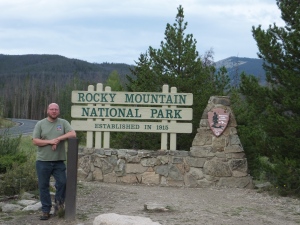
The author at the west (Grand Lake) entrance to the park. Photographed 08/05/2013 at Rocky Mountain National Park near Estes Park, Colorado.
My wife and I visited this park over a couple of days earlier this month. We entered from the west near the town of Grand Lake, and on our first evening we ventured a short distance into the park. Near the entrance we were greeted by this osprey (Accipitriformes: Pandionidae: Pandion haliaetus) sitting in its huge nest of sticks:
From there we headed a few miles up the Kawuneeche Valley where scenic rivers cut through meadows, mountains, and conifers:
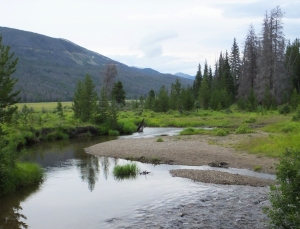
Kawuneeche Valley photographed 08/05/2013 at Rocky Mountain National Park near Estes Park, Colorado.
Less than a mile up the valley we came across our first gang of elk (Artiodactyla: Cervidae: Cervus canadensis). During our time here we would end up seeing over a hundred of these animals in various places throughout the mountains. They were so common that before long we were joking “What’s that? Oh it’s just another elk.”

Elk in the Kawuneeche Valley. Photographed 08/05/2013 at Rocky Mountain National Park near Estes Park, Colorado.
Once in a while we would see a young calf visible among the foliage:
In some of the forests we also came across bulls congregating:
A little farther up the valley we found this moose cow (Artiodactyla: Cervidae: Alces alces) heading to a river for a drink:
After several minutes her calf cautiously crouched up through the grass to meet her:

Moose cow and calf photographed 08/05/2013 at Rocky Mountain National Park near Estes Park, Colorado.
Just before dusk we stumbled across this bull moose foraging in a creek along the road:
The next morning the valley was bathed in mist and the soft glow of sunrise:

Morning mist and color photographed 08/06/2013 at Rocky Mountain National Park near Estes Park, Colorado.
On this second day we drove across the entire length of Trail Ridge Road, the only route through the entire park. The beautiful peaks here are the result of uplift during the Laramide Orogeny from about 70 to 40 million years ago. Tectonic collision gradually forced these rocks ever upward, and they’re now subjected to the forces of erosion.
As we gained elevation we rose above the Never Summer Mountains:

Never Summer Mountains photographed 08/06/2013 at Rocky Mountain National Park near Estes Park, Colorado.
At just under 12,000 feet we arrived at the Alpine Visitor Center. At this altitude the wind was brisk and the temperature was only around 40 degrees F in spite of it being mid summer.

The author at the Alpine Visitor Center. Photographed 08/06/2013 at Rocky Mountain National Park near Estes Park, Colorado.
Above the tree line we found a group of bighorn sheep rams (Artiodactyla: Bovidae: Ovis canadensis) basking in the sun and chewing their cud:
The huge horns on these beasts were impressive:
As we crept up past 12,000 feet we entered the seemingly barren alpine tundra:
In spite of the elevation and cold, sparse landscape, there were a number of organisms to be found here. First up was this yellow-bellied marmot (Rodentia: Sciuridae: Marmota flaviventris) who seemed to be enjoying the mountain view:

Yellow-bellied marmot enjoying the view. Photographed 08/06/2013 at Rocky Mountain National Park near Estes Park, Colorado.
Although closely related to common woodchucks, the bright coats of these mountain dwellers made them more attractive:

Yellow-bellied marmot photographed 08/06/2013 at Rocky Mountain National Park near Estes Park, Colorado.
While trees and shrubs were absent this far up, many different wildflowers seemed right at home here:
These plants are adapted to hug the ground in order to avoid the cold, battering winds at this elevation.
While examining the tundra flowers we heard a lot of distinct squeaking coming from a nearby rock outcrop. The sounds were a lot more noticeable than the tiny creatures making them, leading us to a game of “spot the pika.”
Although American pikas (Lagomorpha: Ochotonidae: Ochotona princeps) look like rodents, they’re more closely related to rabbits and hares.
Even though it was early August there was still some snow to be found along the highest stretches of Trail Ridge Road:

Snow on the Lava Cliffs. Photographed 08/06/2013 at Rocky Mountain National Park near Estes Park, Colorado.
Before long we were on our way back down the east side of the park:

Eastern mountains photographed 08/06/2013 at Rocky Mountain National Park near Estes Park, Colorado.
We had one more stop at the Alluvial Fan where a creek rushed down a slope of boulders:
Here countless chipmunks were scurrying around the rocks and logs:
Different wildflowers decorated this subalpine forest:
Back below the tree line were numerous quaking aspen:
After leaving the east side of the park we came across many more bighorn sheep. Adults and lambs alike were scaling the rocky cliffs of Big Thompson Canyon just outside Estes Park:

Bighorn sheep along Big Thompson Canyon. Photographed 08/06/2013 near Rocky Mountain National Park outside Estes Park, Colorado.
Although I’ve thus far visited only 28 of our 59 national parks, I can safely say Rocky Mountain is my new favorite. The diverse, scenic landscapes and abundant wildlife make this a destination that can’t be missed.
Final note: Rocky Mountain is one of our oldest and most famous national parks and it attracts over four million visitors annually. Most people visit in the summer since many roads are closed by snow from about October through May. If you’re like me and hate crowds, do as we did and visit in the evening or morning on a weekday. We passed very few people on our journey, and wildlife tend to be more active at these times of day. As we left the park around 11am we passed huge crowds of people and cars that were streaming in. It made me glad we got to enjoy the quiet serenity to ourselves before the daytime rush.


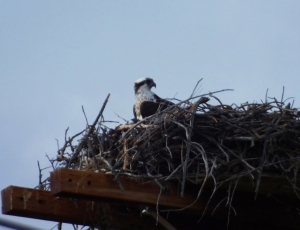






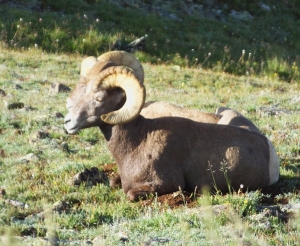






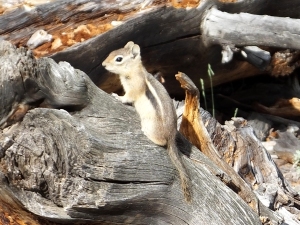


wow! there’s so much animals here… and they’re free to roam around, right? it’s so nice to see them in their natural habitat.
LikeLike
Yep, the animals here are wild and go wherever they please. Many of them are so abundant, however, that you might think you’re in some kind of zoo.
LikeLike
That’s good to know… I’ve only encountered animals from the zoo, unfortunately (except if their “home animals, farm animals, or the elephants/monkeys in india). And although I’ve read about them in their own habitat in some places, I’ve yet to see it for myself.
LikeLike
Although the wildlife of Africa and Asia get a lot of attention, there’s some really cool stuff to see in North America as well. Being within twenty feet of a bull moose is something not soon forgotten.
LikeLike
I am absolutely amazed by the variety of wildlife that you encountered without having to stake out a location for hours on end (which is what I imagined you would have to do to see moose, elks, and bighorn sheep). You also managed to get wonderful shots of the little critters too. In many ways, though, the landscape is the big star of the show and your shots with the morning mist are breathtakingly beautiful. I don’t really like a crowd when I am enjoying wildlife, so I appreciate your tips about how to avoid the hordes of people. Your photos and narrative have encouraged me to do some research–this looks like a place I’d love to visit.
LikeLike
The amount of wildlife was shocking. I had been to several places out west and up north that had elk herds but never got to see one. When my wife and I went to the Great Smoky Mountains earlier this year we finally saw a dozen or so, but they ended up paling in comparison to the vast numbers at Rocky Mountain.
Similarly, I backpacked for four days at Isle Royale last spring and although I found a lot of moose tracks and scat, I never got to see one there. Imagine my surprise when we got to see several cows, a calf, and a bull up close with no effort at Rocky Mountain.
The scenery was indeed amazing. When mountains, forests, rivers, lakes, sunrises and sunsets come together, beautiful scenes are inevitable.
I always do a lot of planning before visiting a national park, both to know where I want to spend my time and to know how to avoid other people. When I go into the wild I want to feel like I’m alone in the wild. It’s quiet, peaceful, rejuvenating, and a welcome escape from civilization. If I wanted to be surrounded by people I’d go to Times Square.
LikeLike
The parks in the west are the crown jewels of the US park system, there is nothing like them any where in the world. They are your legacy, watch over them.
LikeLike
Enjoyed your descriptions and photos!
Looking forward to out first vist and hope to see some fall color in just 11 more days!!
LikeLike
I’m sure you’ll have a great time. The big wildlife should be getting even more active as they approach the rut, and hopefully the colors cooperate.
LikeLike